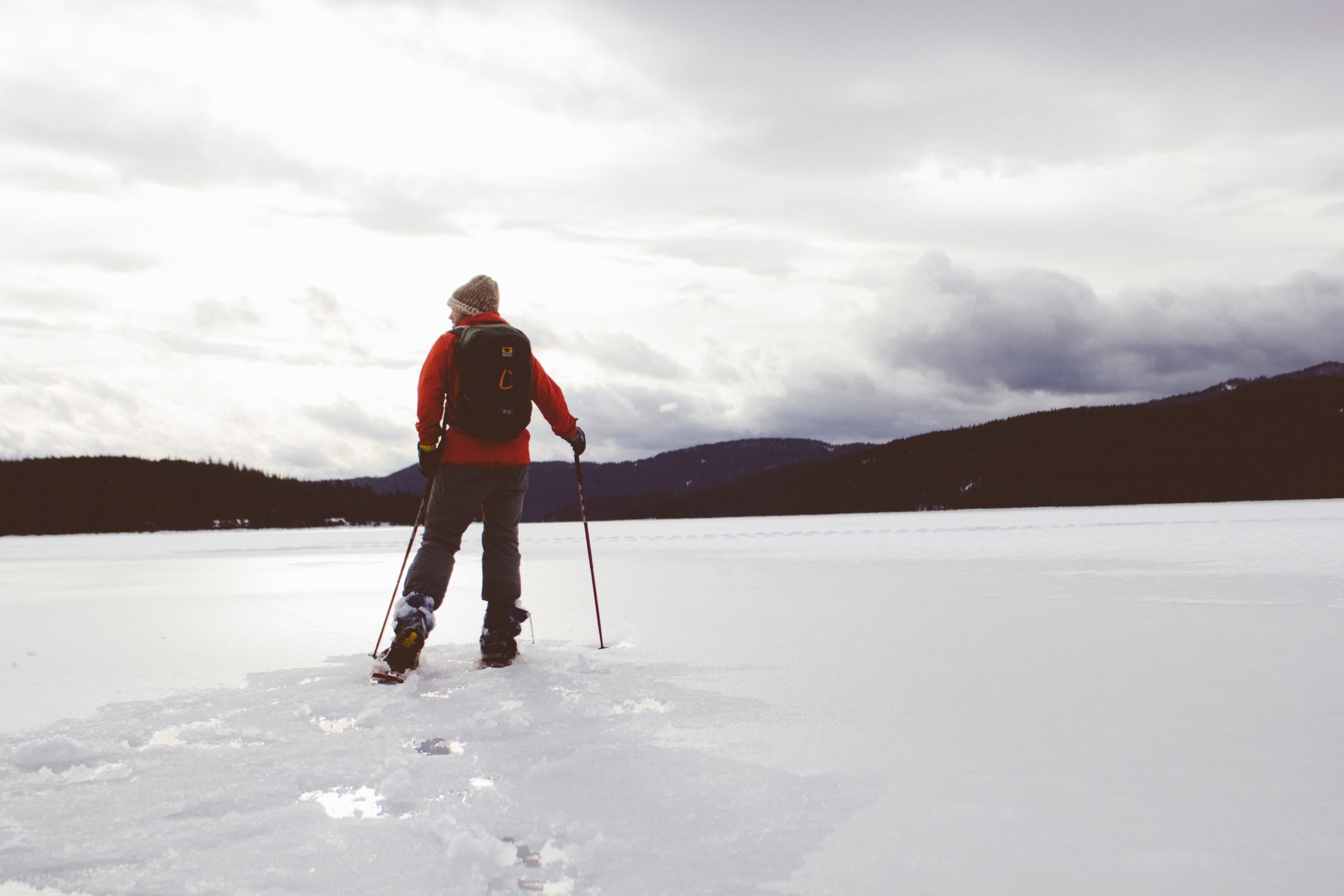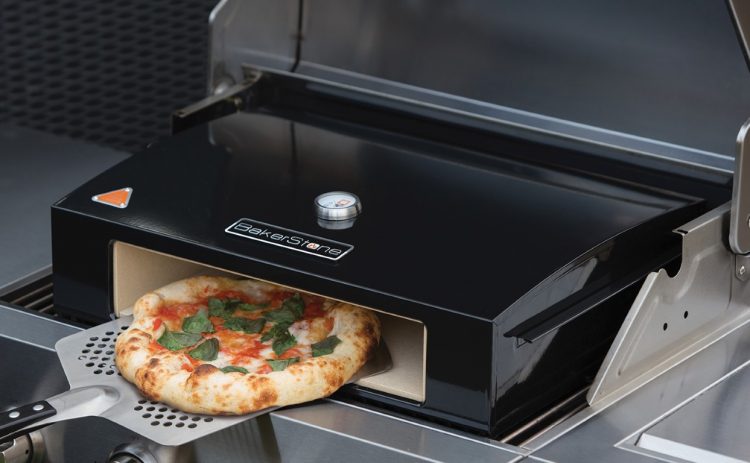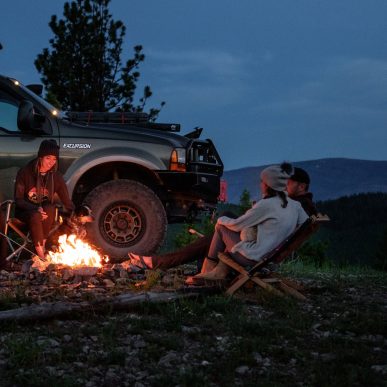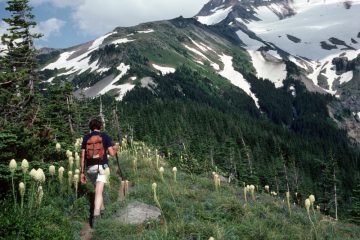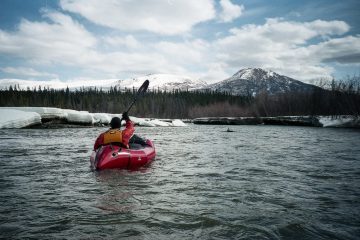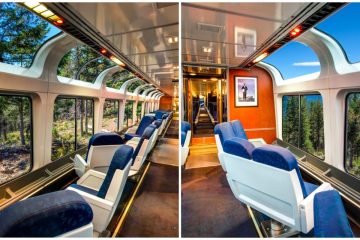Hiking in winter is always a ton of fun, but is even better with a good pair of snowshoes. While shallow snow might be relatively easy to walk on, when it gets deep, the going gets tough. That’s where snowshoes come in.
Snowshoes have existed in some form or another for thousands of years, all over the world, but Native Americas and Inuit invented the form of snowshoe we most recognize as a classic snowshoe today – wood frame with rawhide bindings. They were used heavily in hunting bison.
Instead of postholing in knee-deep snow, snowshoes will help you practically float on top of the snow without any trouble. Long hikes are far less taxing, and you can make significantly better time with far less energy.
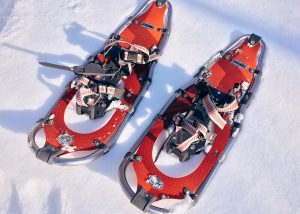
CHOOSING THE BEST SNOWSHOES FOR YOU
As with most other outdoor gear, snowshoes aren’t a one-size fits all – whether that’s one literal boot size or one purpose. There are few different kinds of snowshoes you’ll want to look at, depending on your planned use.
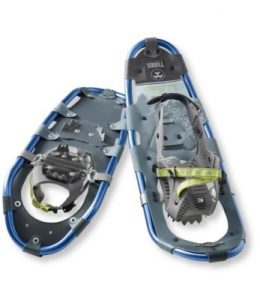
HIKING/RECREATIONAL SNOWSHOES: FOR GETTING OUTSIDE
Regular hiking snowshoes – also known as recreational snowshoes – are the most common type of snowshoe, and the simplest. If you’re looking for your first pair, and don’t intend to use them for anything too rugged, these probably the kind you’ll want to look at. They are generally intended for mild and flat terrain, as well as rolling hills, but not climbing mountains or ultra-long treks. This because of their usually quite simple bindings and traction don the bottom, which aren’t designed for heavy use. But this doesn’t mean they are of any lower quality or durability than other snowshoes. An example of hiking snowshoes are the MSR Evo 22’s, which have a nice modern fit and lots of grip, at an affordable price.
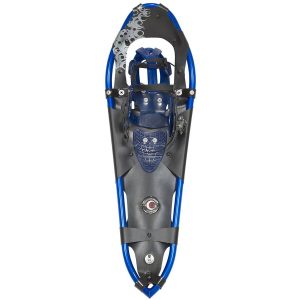
BACKCOUNTRY SNOWSHOES: FOR RUGGED TERRAIN
Now it’s time to tackle some tough terrain, and you want a pair of snowshoes to match. Backcountry snowshoes are more rugged and heavy-duty than regular hiking snowshoes, and will have more features, stronger builds, and heavier-duty traction and crampons. Accordingly, they will also have higher price tag. They’ll do far better on icy slopes and hills, and will fit larger, thicker boots much more comfortably. Our choice for these would probably bet the Crescent Moon Gold 10, which fit extra-large boots, have stainless steel crampons, and a slimmer, tear drop shape, which provide more mobility and flexibility, letting you move freely without smacking into each other too much.
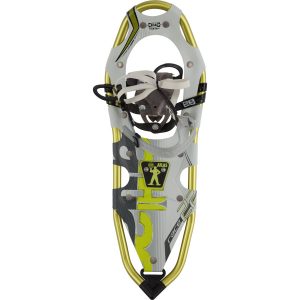
RACING SNOWSHOES: FOR QUICK SPEED
Racing snowshoes are made for those with a need for speed. Racing, or running, snowshoes are less concerned with flotation, and more so with lightweight, allowing you to run as quickly as possible over powdery, deep snow. You’ll be able to wear them over mild terrain, whether loose or packed snow. The shape will also be a little different; shorter, thinner and more tapered. This helps keep them from smashing into each other. A good of set racing snowshoes might be the Rocket Carbon from Crescent Moon.
TYPES OF SNOWSHOE FRAMES
Most snowshoes these days are made with aluminum frames, either flat, or of hollow tubing. Hollow tubing is usually better for softer, more powdery snow, while flat snowshoes are becoming more popular among mountaineers; the flat shape with sharp edges grip on icy and steep surfaces better.
You can also find lots of plastic/synthetic frame snowshoes these days, usually in a flatter, lighter shape. These work well for light, small setups, especially when you’re trying to cut down on weight, but don’t offer the same kind of grip, traction and features that larger, heavier-duty backcountry snowshoes will. There are some good options out there, however.
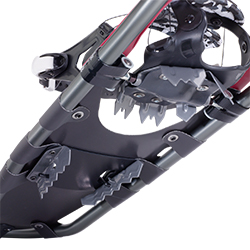
TRACTION
Snowshoes will almost always have some kind of traction on the bottom for gripping onto snow and onto , usually in the form of crampons, made from steel or aluminum. Most hiking or racing snowshoes will usually have a two-prong toe design, while many heavier-duty backcountry snowshoes feature middle prongs – a toe, so to speak – that sticks out and allows you to dig in to slopes and slick surfaces – much like regular crampons. Many snowshoes now have traction rails, on the side of the shoe, which provide more traction and stability on slopes.
Lots of snowshoes with plastic deckings have braking bars, which keep you from sliding backwards on hills, as well.
DIFFERENT KINDS OF BINDINGS
When choosing snowshoes, you will definitely want to take a look at the bindings, and make sure you select some that work well with your own boots. There are two common types of bindings – Rotating Bindings, also called Floating Bindings; and Fixed Bindings.
Rotating bindings are thus called because they rotate on the snowshoe decking, letting your feet move a bit as you walk and allowing for a more natural movement, in deep snow and on slopes. These will be found on most modern snowshoes.
Fixed Bindings, on the other hand, are more traditional; they don’t pivot, instead keeping your feet secure and flat as you walk. This gives you more control over the shoe as opposed to rotating snowshoes but doesn’t work quite as well on slopes.
Bindings can be made of nylon, rubber/polyurethane, or ratchet straps, similar to those found on many snowboards. Rubber bindings will be the best, as they do not freeze when they get wet and cold, and for that reason they are the most common.
You can even find some newer models with boa straps, a relatively new style of binding commonly found on snowboards, that wrap around your heel; by pulling on the adjustment strap, you can easily pop the heel open, and simply slide your feet in and out. A few new snowshoe models even come with heel lifts, which fold up and support your heals while climbing up steeper terrain.
We bet if you look around, you can find some old-fashioned snowshoes with leather bindings, too.
TIP: Be sure to find a snowshoe with bindings that fit your own particular boots. As boots can be pretty heavy and thick, this may be a bit hard if you already have large feet. If you’re having trouble, backcountry snowshoes are more likely to fit you, as they are often designed for larger, heavier-duty boots.
Contents
